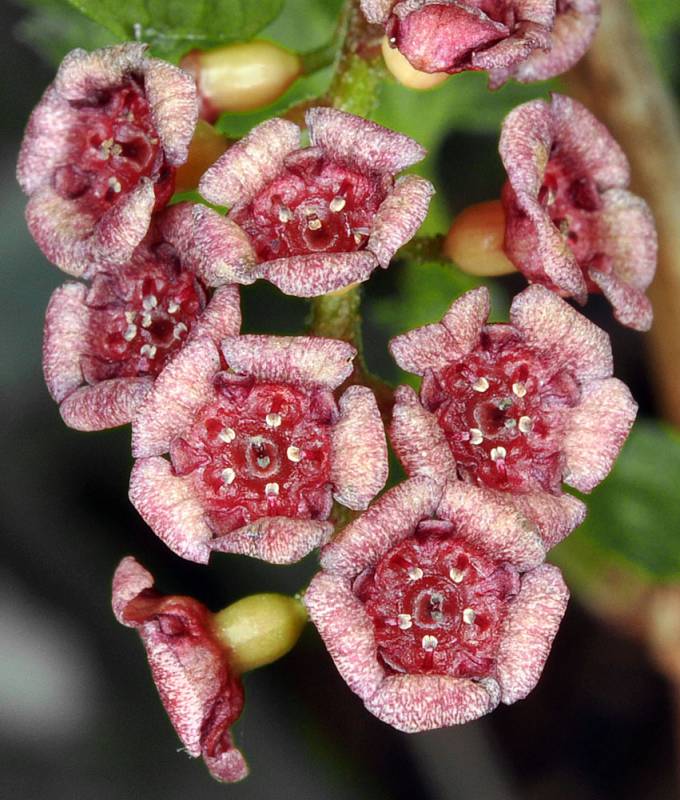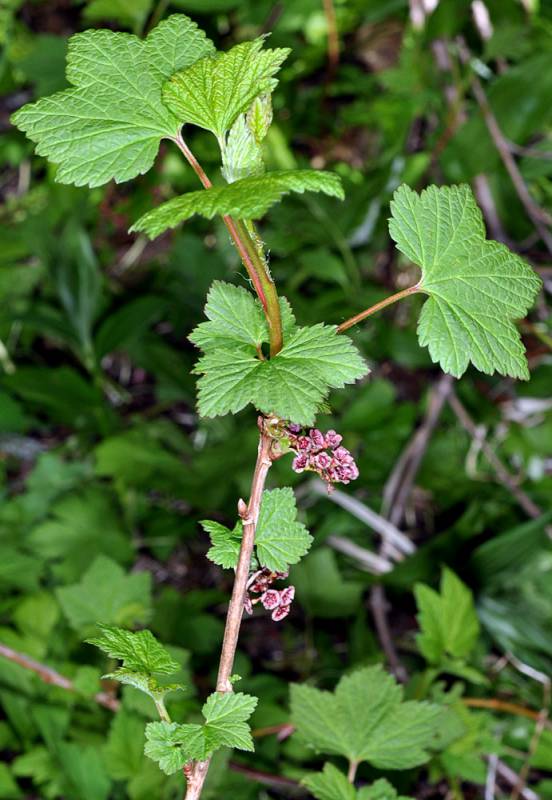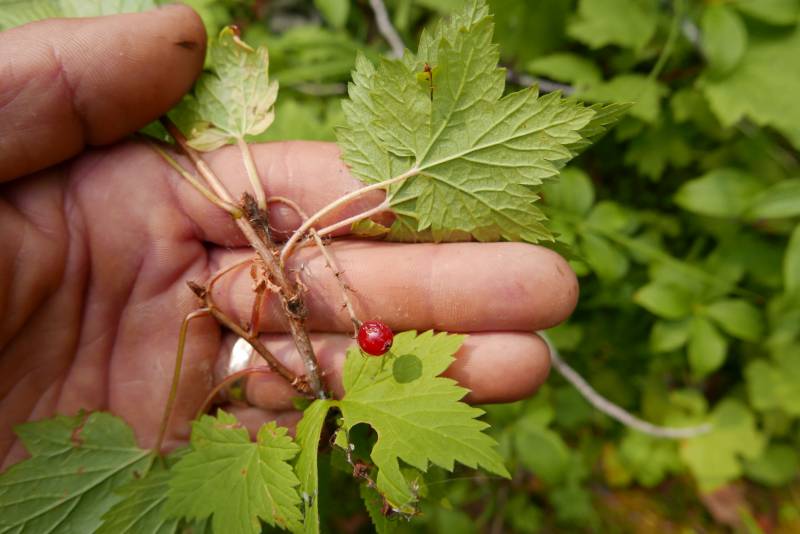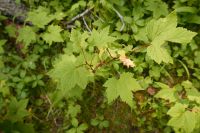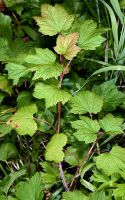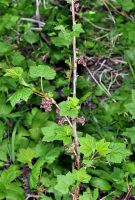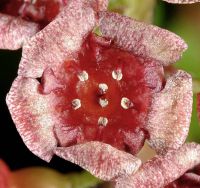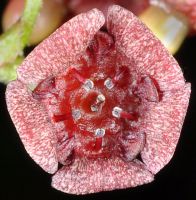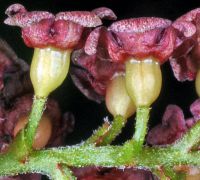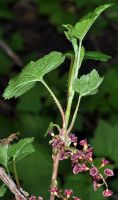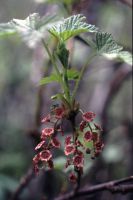Distribution: Occurring on both sides of the Cascades crest in Washington; Alaska to Oregon, east to the northern Great Plains, Great Lakes region, and northeastern North America.
Habitat: Moist woods and rocky slopes at middle to high elevations in the mountains.
Flowers: April-June
Origin: Native
Growth Duration: Perennial
Conservation Status: Not of concern
Pollination: Bumblebees, bees, hummingbirds
Unarmed, decumbent and nodally rooting to spreading shrub up to 1 m. tall, the branches straw-colored to purplish-brown.
Leaves alternate, long-petiolate, the blades broadly cordate, up to 10 cm. broad, glabrous above and hairy beneath, palmately 3-5 lobes less than half their length, the segments broadly triangular to ovate-triangular, coarsely dentate.
Inflorescence of drooping, 6- to 13-flowered, short racemes, shorter than the leaves; pedicels up to 4 mm. long, jointed; calyx glabrous, dark reddish-purple or greenish-white and purple-spotted; calyx tube saucer-shaped, 1 mm. long, lined with a 5-lobed, reddish-purple disk, the 5 lobes broadly rhombic with a wedge-shaped base, 2 mm. long and broad, spreading; petals 5, broadly wedge-shaped, 1 mm. long, reddish-purple; stamens 5, equaling the petals, ovary inferior, smooth and glabrous.
Berry ovoid, less than 1 cm. long, bright red and smooth.
Publication: Nova Acta Acad. Sci. Imp. Petrop. Hist. Acad. 10: 378. 1797.
Ribes rubrum L. var. propinquum (Turcz.) Trautv. & C.A. Mey.
Ribes triste Pall. var. albinervium (Michx.) Fernald
PNW Herbaria: Specimen records of Ribes triste in the Consortium of Pacific Northwest Herbaria database
WA Flora Checklist: Ribes triste checklist entry
OregonFlora: Ribes triste information
E-Flora BC: Ribes triste atlas page
CalPhotos: Ribes triste photos

